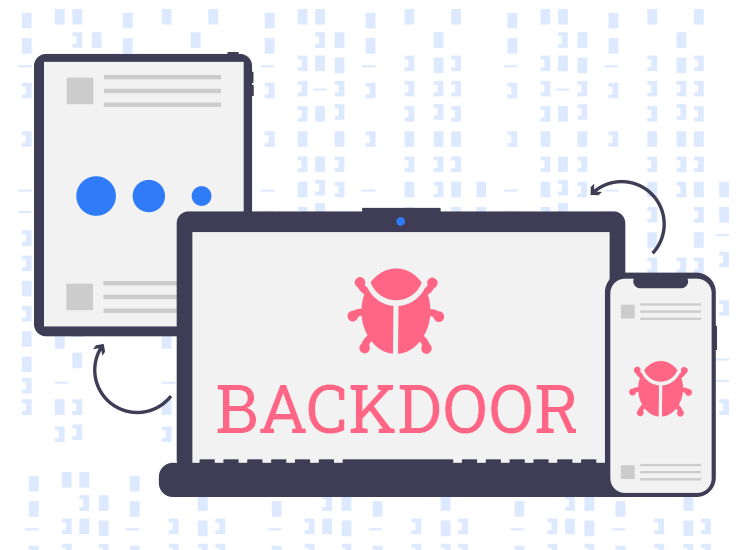
Have you ever faced a backdoor attack on your system? These are extremely hard to detect and therefore difficult to get rid of easily. What are backdoor attacks and how can we stay protected against them?
Backdoor attacks generally refers to the installation of a certain malware like a trojan which is capable of negating normal authentication procedures, thereby capable of affecting a computer system, network, server, or software application.
This way they gain quick and unauthorized access to the target system and grants remote access to the cyber exploiters who can remotely issue system commands, manipulate databases and file servers, and even update malware on the system.
Backdoors can be installed on the target system by taking advantage of system vulnerabilities and security loopholes. They can then execute a series of malicious activities such as:
- Data theft
- Website defacing
- Server hijacking
- Distributed Denial of Service (DDoS) attacks
- Advanced persistent threat (APT) assaults
- Watering hole attacks (process of infecting website visitors)
- Install spyware, ransomware
- Mine cryptocurrency
How do backdoor attacks occur?
Remote file inclusion (RFI) is the most common way of installing a backdoor trojan into a vulnerable system. Perpetrators identify potential targets with the aid of scanners that locate websites having unpatched or out-of-date components.These unpatched components then provide the scope to install a backdoor on the underlying server.
Backdoor trojan injection occurs in a phased manner where the first phase involves the installation of a dropper (this is a small file involved in retrieving a bigger file from a remote location) followed by the second phase when the installation of the backdoor script occurs on the server.
Once injected into a server, it is particularly challenging to wipe it out because cybersecurity solutions may fail to detect them as their names are masked with aliases. Furthermore, most apps are designed on external frameworks using third-party plugins.
Is there protection against backdoor attacks?
Backdoor attacks were the fourth most popular cyber threat in 2018 for consumers and businesses.
- Change default passwords: Ensure to change the default password assigned to you on behalf of the IT or admin team. Always update your application, online accounts, and system passwords frequently. Use unique and complex passwords to evade the risk of being targeted easily. It is also recommended to enable two-factor authentication wherever possible.
- Monitor network activity: Keep a watch on the data usage. Use a firewall program to track inbound and outbound activity from installed apps.
- Carefully choose apps and plugins: Ensure to use apps and plugins from reputed sources.
- Install an advanced cybersecurity solution: Use a promising antivirus solution coupled with a firewall to beat backdoor trojans.
This was all about backdoor attacks in a nutshell along with the protective measures that you can undertake.


2 Comments